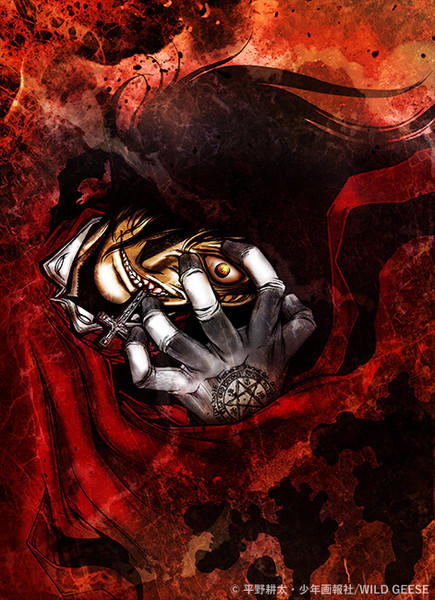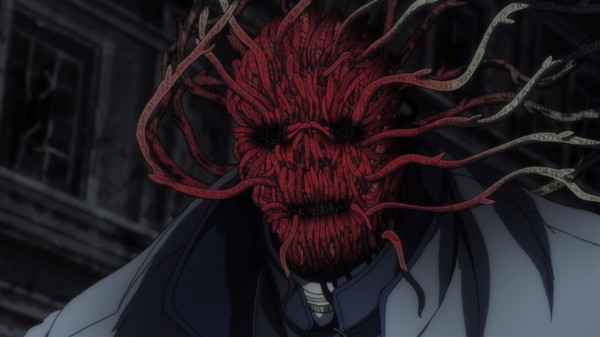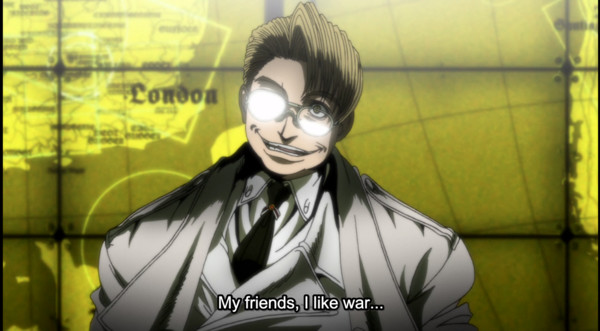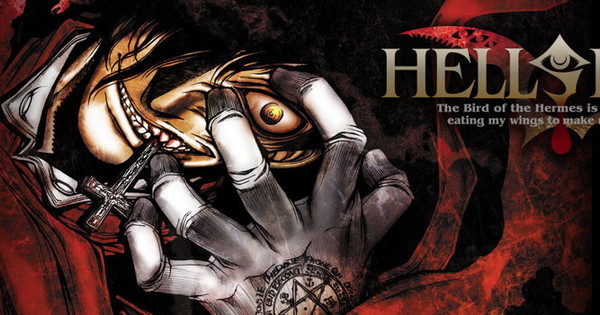Curated From www.animenewsnetwork.com Check Them Out For More Content.

Welcome back to The Anime Backlog, the column where I chronicle my journey to overcome a backlog of 100+ anime titles. After slaying my behemoth of shame, Fullmetal Alchemist: Brotherhood, I decided to dive into the quintessential dark and edgy series of the aughts, Hellsing Ultimate.

© 平野耕太・少年画報社/ WILD GEESE
Hellsing Ultimate
Why Is It Important?
I watched Gonzo’s Hellsing television series as it was released on DVD in 2002-2003, which means I was roughly 14-15 years old. I remember very little about the television series’ take on Kouta Hirano manga outside some vague memories involving Nazi vampires. Regardless of the finer details, like plot, Hellsing was impossible to escape during its heyday and firmly cemented itself as a gory, horror-action spectacle. This was only amplified by Arucard’s iconic character design; t-shirts were prime real estate for his gun-toting visage and all-seeing eyes.
However, Gonzo’s adaptation suffered from a common problem: the manga wasn’t over, and needed to reach a proper conclusion. It wasn’t until Hellsing Ultimate that the story would get an animated version of its canon ending, and thanks to its direct-to-home-video format, it could push the envelope even further.
Hellsing Ultimate wasn’t without its own issues, though. The home video format allowed for extended runtime and more graphic content, but the OAV‘s release schedule was less consistent. The new series first debuted in 2006 but wouldn’t conclude until 2012, leading to frequent gripes across anime community forums at the time. It also switched studios, beginning at Satelight before moving to Madhouse and then finally to Graphinica. The North American release likewise stuttered throughout the six-year release, thanks to the industry bubble bursting in the mid-aughts. Geneon quit in-house distribution after releasing the first three episodes in 2006, directly affecting the show’s run on Starz Edge‘s Animidnight programming block.
Funimation took over, but North America was stuck with just the first four episodes until November 2012. The release hoopla and subsequent frustration helped keep the series at the forefront of anime fans’ minds, although it was far from ideal.
More importantly, Hellsing in and of itself contains a level of bombast that refuses to be forgotten. I’ll get into the finer details and how well they have (and have not) aged below, but suffice to say there is still nothing quite like Hellsing. It unapologetically crosses every line of “good taste,” embracing its absurdity every step of the way.
Note: This column will routinely include spoilers. Reader discretion is advised.
Does It Live Up to Its Reputation?
Since starting this column, one of the most enjoyable parts is booting up a series from my backlog and then gradually reassessing my expectations and framing. My memory of Hellsing was limited to “it’s a vampire anime” and “Integra is cool.” I thought I recalled some general sexual tension between Seras and Arucard and I remembered she lugged around a giant gun. I had vague ideas about Anderson and Walter. And yes, I knew there were Nazis. That’s enough to draw a rough sketch, but it’s far from the whole picture.
When the credits closed for episode 10, I had a lot of conflicting feelings about the entire experience. Hellsing Ultimate is truly a relic of mid-aughts edginess, and there are elements in it that would get far more scrutiny today than it likely did during its initial run. At the same time, it’s best to consider the work by its obvious influences. Hellsing Ultimate draws heavily from grindhouse films and B-horror exploitation fare. Audiences were eating this stuff up at the time; 2007 saw the release of Robert Rodriguez and Quentin Tarantino’s Grindhouse, which included the faux-trailer for Werewolf Women of the SS, itself a reference to ’70s exploitation films featuring Nazis. I would put Hellsing Ultimate in the same thematic context. For all its style, the series is, first and foremost, a bloodbath.

© 平野耕太・少年画報社/ WILD GEESE
The carnage is orchestrated through a series of over-the-top conflicts between the Church of England’s Hellsing Organization, the Vatican’s Iscariot Organization, and Millenium, the remnants of the Third Reich that are now a bunch of blood-thirsty vampires headed by The Major. The inter-group conflict between the three propels much of the ultra-violence on display, with sprinklings of apocryphal terms and completely incongruent comedy bits. There are some predictable character arcs hinged on heightened appeals to emotion, but Hellsing Ultimate is most interested in new ways to decapitate, explode, or otherwise render its characters into piles of meat.
There’s value in entertainment that gets its audience to choke on popcorn as some dude’s head is dunked through a window, but even for folks who like their vampires extra-chompy, Hellsing Ultimate isn’t holding any punches. The series engages in stale sexual assault jokes from the get-go, and these center on Seras, who is barely a character. Like the rest of the series, Seras is a product of her time. The idea of “moe” hadn’t taken a firm hold yet; instead, anime girls were often ‘badass’ in combat scenarios but utterly inept at anything else. This meant they could be “cool” when it was important but non-threatening outside of battle. Whenever Seras isn’t sharpshooting with impossibly large munitions, villains are threatening to rape her, and her comrades are joking about forcing themselves on her (don’t worry, she gets that it’s just jokes!). The casual sexism is eye-rolling; it’s the graphic necrophilia, infanticide, and later child sexual assault that is still shocking.

© 平野耕太・少年画報社/ WILD GEESE
The Nazi villains are another major hurdle when watching in 2024. In the context of the time this was made, Nazis were an easy, schlocky villain group to throw into a semi-historical setting. I’m all for mocking and belittling Nazis in media, and the more ridiculous they are, the better. I already touched on their appearances in ’70s-era exploitation films, but they also have a history in horror spawned by their own horrific historical presence and various occult fixations. Movies like Dead Snow and 2004’s Hellboy feature this. Hellsing Ultimate‘s turn at it doesn’t overcome coding its villains as “cool” despite the fact they’re armband-wearing Nazis. This leads to several uncomfortable moments during its run, especially one of its ending sequences that try to invoke some farcical little tour around the world starring Nazi catboy Schrödinger.
Watch It or Remove It?
Hellsing Ultimate has not aged gracefully. It remains a progenitor of ultra-violent anime in line with Wicked City and Angel Cop with its own supernatural flare. Hirano’s art style makes it stand apart from its peers and current anime fare, although the actual OAV didn’t hit its strike until Madhouse took over production duties. The first two episodes are especially ugly, confusingly storyboarded, and suffer from sound-mixing issues.
At 10-hour-long episodes, it succeeds at staying engaging throughout. I was never bored, and the late-game villain reveal was one of my favorite parts. However, I wouldn’t recommend it without a short list of caveats, and I can easily see it being too much for modern audiences. Should you take it off your backlog? If any of the elements I mentioned above are not things you have a stomach for, you can skip it. Maybe try out Tokyo Ghoul instead (speaking of other things on my backlog…)
Final Verdict: Tentatively watch it.
Title: Hellsing Ultimate Media Type:OAV Length: 10 episodes Vintage: 2006-2012 Genres: Supernatural, Horror, Action Availability
|

